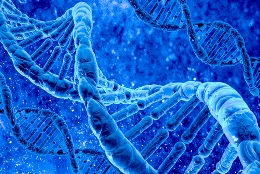21 November 2014
 University of South Australia researchers are part of an international research consortium that has discovered a new gene underlying one of the most devastating forms of epilepsy - progressive myoclonus epilepsy (PME).
University of South Australia researchers are part of an international research consortium that has discovered a new gene underlying one of the most devastating forms of epilepsy - progressive myoclonus epilepsy (PME).
The rare condition can be indistinguishable from other forms of epilepsy at the time of onset, usually in childhood, but the as the condition develops, people with PME suffer increasingly frequent epileptic seizures and a consequent decline in cognitive ability, and debilitating involuntary muscle twitching.
The exacting study, led by researchers at Finland’s University of Helsinki and the Universities of South Australia and Melbourne, has shown that a single mutation in a potassium ion channel gene is at the core of a substantial percentage of cases of PME.
It is estimated that the mutation is carried by hundreds of patients worldwide. The study employed modern DNA sequencing technologies, which have revolutionised genetic research into rare, severe diseases.
The findings were published this week in Nature Genetics and form part of a core of collaborative research into the genetic causes of epilepsy being carried out at UniSA.
NHMRC Research Fellow (CDF) and head of UniSA’s Epilepsy Research Program, Associate Professor Leanne Dibbens says the goal of the international collaborative study is to identify underlying genetic causes in 84 PME patients using DNA sequencing targeting the protein coding elements of the human genome.
“Overall we have found a genetic diagnosis was reached for almost one third of the patients,” Prof Dibbens says.
“These findings shed new light on the molecular genetic basis of progressive epilepsy, which will be of great importance to the advancement of both diagnostics and, in the future, possible treatments for the disease.”
She says the study also proves the power of modern DNA technologies in detecting the underlying genetic causes of severe diseases.
The researchers found that the documented mutation was found in a total of 13 patients and was not inherited from parents – instead it has emerged in a germ cell of one of the parents or in the fertilized egg.
Each individual has dozens of new mutations but they are rarely disease-causing.
The mutation the researchers have studied occurs in about one out of every 5.7 million conceptions, indicating that at least hundreds of patients could have this mutation globally.
The single mutation found in several patients around the world appears on what has been described as a ‘mutation hotspot’ – on the nucleotide, a subunit of the DNA - which is more prone to alterations.
The new mutation identified in the study disrupts the function of a potassium channel, KV3.1, which has a central role in signal transmission in the brain.
The likely consequence of the mutation is that inhibitory signals in certain parts of patient brain are reduced, which makes patients susceptible to epileptic seizures and myoclonus starting in childhood. In addition, the mutation causes degeneration of the cerebellum and subtle cognitive decline in some of the patients.
Prof Dibbens says the hopeful aspect of the research is that the mutation occurs in an already well-characterised ion channel.
“Anti-epilepsy drugs have been developed to target similar ion channels, so there is hope that further research will discover a way to target the ion channels affected by this mutation, delivering a much needed therapeutic treatment for PME patients," she says.
“Our work has been strengthened by the fact that we have been able to combine large sample collections for different countries, which has been of enormous value.”
The central research institutes participating in the study were University of Helsinki, Institute for Molecular Medicine Finland FIMM and Folkhälsan Research Center (Finland), Universities of Melbourne and South Australia (Australia), Wellcome Trust Sanger Institute (UK), University of Tübingen (Germany) and several universities in Italy.
A copy of the published research is available in this month edition of Nature Genetics.
Media contact: Michèle Nardelli office: +61 8 8302 0966 mobile: 0418 823 673 email: michele.nardelli@unisa.edu.au




